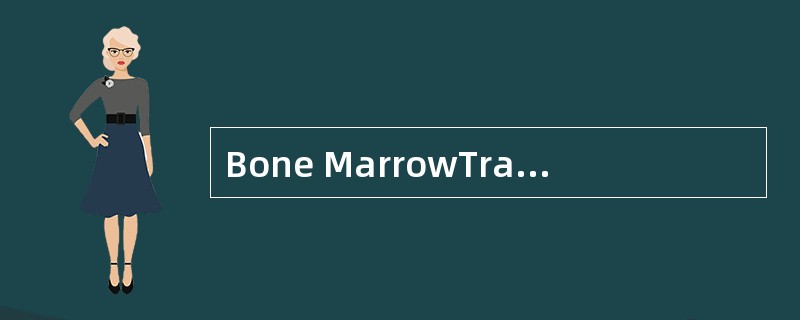Bone MarrowTransplantation
Bone marrow is thespongy tissue inside some of your bones,such as your hip and thigh bones. Itcontains immature cells,called stem cells.The stem cells can develop into the
red blood cells thatcarry oxygen through your body,the white blood cells that fight infections,andthe platelets that help with blood clotting.
If there is aproblem with your bone marrow,a transplant can give you healthy new marrow. Youcould need a transplant because of a disease,such as bone marrow diseases or
cancers likeleukemia kemia or lymphoma.Or you might need one if a strong cancer treatmentkills your healthy blood cells.
People with cancersometimes donate bone marrow before treatment to be transplanted later. Butoften the new marrow comes from a donor,either a close family member or
someone unrelated.
The healthy cellsfor a transplant can come from three sources:bone marrow;peripheral(circulating) blood that has an increased number of healthy blood-formingcells(also
called peripheralblood stem cells or PBSC);umbilical cord blood that is collected after a babyis born.
If you need anallogeneic transplant,your doctor will look for a marrow donor or cord bloodunit that matches your HLA tissue type.HLA stands for human leukocyte
antigen,a markeiyour immune system uses to recognize which cells belong in your body and whichdo not.
Before your body canreceive the healthy cells,the diseased cells must be destroyed.This is doneusing chemotherapy and sometimes radiation. The destruction of diseased
cells is called apreparative regimen or a conditioning regimen.
On the day oftransplant,the cells from the marrow donor or cord blood unit are infusedintravenously(go into your body through a large vein).These healthy cells moveinto
the spaces insideyour bones where they create new marrow. They grow and make healthy new redblood cells,white blood cells,and platelets.
A.peripheral blood stem cells
B.baby blood
C.bone marrow
D.cord blood
参考答案与解析:
-
相关试题
